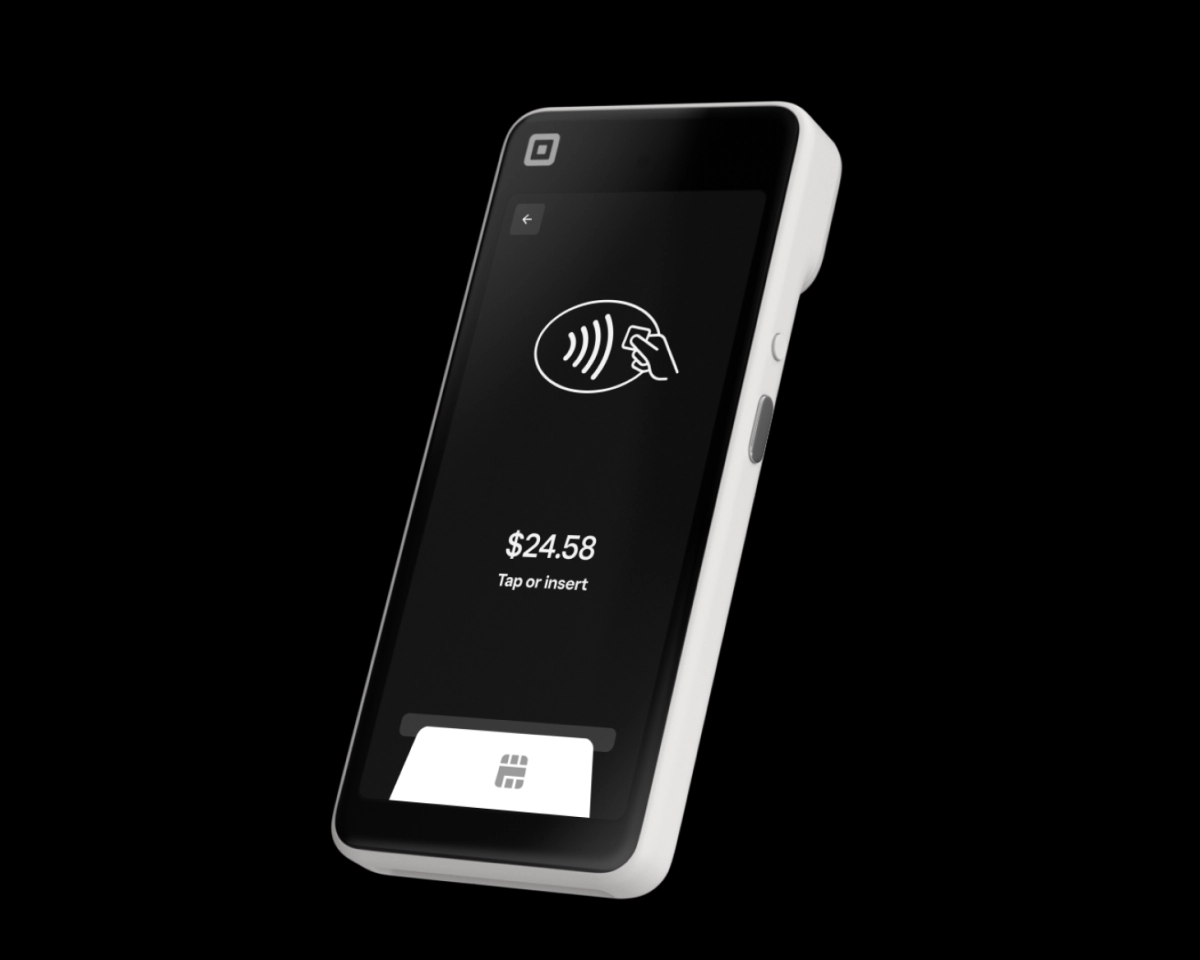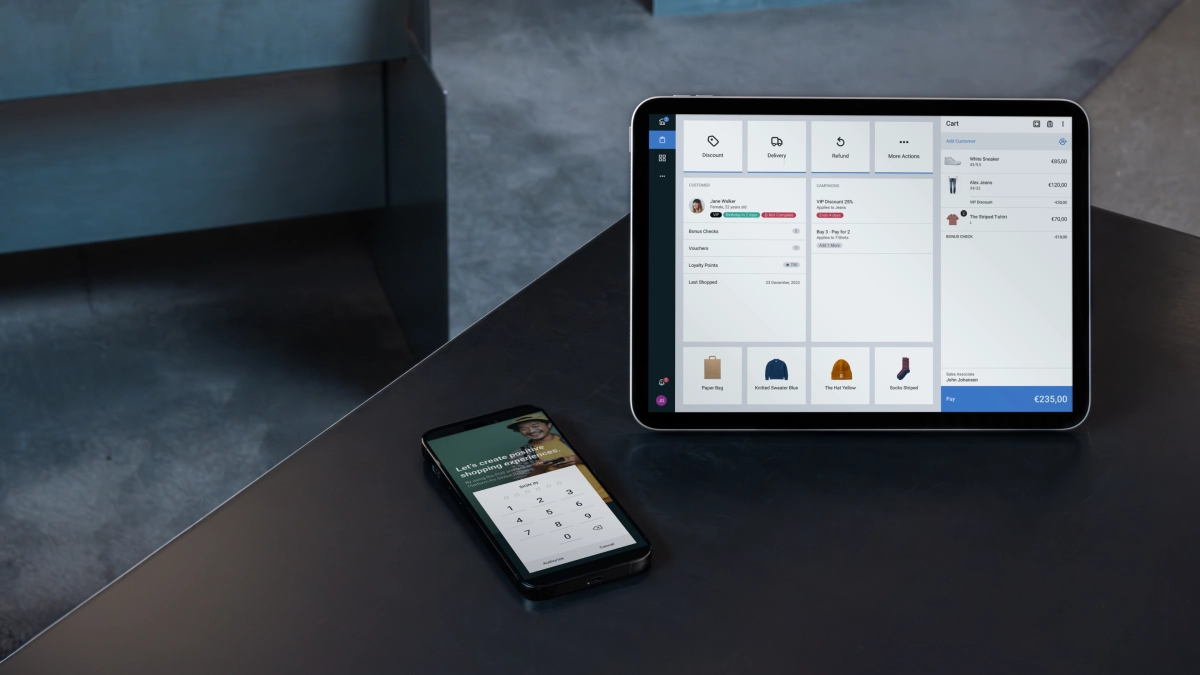Anleitung für die Bereitstellung von POS-Hardware Experten-Tipps für eine nahtlose Einrichtung

Are you struggling to get your POS hardware deployment right for your business? Choosing and setting up the right Point-of-Sale-Hardware auswählen kann Ihre täglichen Abläufe verändern, die Effizienz steigern und die Kundenzufriedenheit erhöhen.
As a business owner or IT manager, I understand how overwhelming it can be to navigate POS-Systeminstallation and integration. That’s why I’m sharing expert insights drawn from real-world experience to help you deploy skalierbare POS-Lösungen mit Zuversicht.
In this guide, you’ll discover practical steps for seamless POS-Hardwareeinrichtung, tips to avoid common pitfalls, and how SDLPOS’s reliable hardware can simplify the process.
Lassen Sie uns eintauchen!
POS Hardware Deployment Overview
Wenn wir von POS hardware deployment, we’re referring to the complete process of installing and setting up the physical components that make up a point of sale system. This includes everything from cash registers and barcode scanners to receipt printers and payment terminals working smoothly together. The deployment goes beyond simply placing devices; it ensures proper integration, configuration, and ready-for-use status tailored to your business needs.
What Is POS Hardware Deployment
POS hardware deployment involves selecting, installing, and integrating all necessary devices to operate a point of sale system effectively. This process ensures that your retail POS hardware or restaurant POS terminals communicate seamlessly with your software, enabling fast and secure transactions. A well-deployed system minimizes downtime, supports various payment methods, and handles real-time data syncing with inventory and sales reports.
Key Components of a POS Hardware System
Every POS hardware setup includes several essential parts. Understanding these helps in choosing the right configuration for your business:
- POS-Terminal: The main computer or touchscreen device where transactions are processed.
- Belegdrucker: Prints customer receipts quickly and reliably.
- Barcode-Scanner: Speeds up checkout by scanning product codes.
- Geldschublade: Securely stores cash received during transactions.
- Payment Terminal: Enables credit, debit, and contactless payments.
- Kundenanzeige: Shows transaction details and promotional messages.
- Networking Equipment: Connects devices both locally and to cloud-based platforms.
Each piece works together for a smooth POS-Systeminstallation, contributing to operational efficiency and a better customer experience.
Common Industries Using POS Hardware
POS hardware deployment is critical across many industries but especially benefits:
- Einzelhandelsgeschäfte: Clothing, electronics, grocery, and specialty stores depend on fast checkouts and inventory tracking.
- Restaurants und Cafés: Lightweight mobile POS deployment and integrated payment terminals streamline orders and billing.
- Gastgewerbe: Hotels and service providers use POS systems for smooth guest check-ins and retail sales.
- Kleine Unternehmen: From boutiques to salons, small businesses benefit from affordable and scalable POS hardware options.
- Mobile Vendors and Pop-Ups: Cloud-based POS solutions with portable devices enable flexible selling anywhere.
Deploying the right POS hardware tailored to your industry maximizes efficiency, security, and scalability. It supports your daily operations and growth with reliable technology designed to handle your specific transaction volume and customer needs.
This introduction sets a solid foundation for understanding POS hardware deployment and its key elements. In the next sections, we’ll dive into how to assess your business needs and plan a seamless POS terminal deployment that suits your goals.
Steps for Seamless POS Hardware Deployment

Deploying POS hardware isn’t just about plugging in devices. It’s a carefully planned process that ensures your point of sale system runs smoothly, boosts efficiency, and supports your daily operations without hiccups. Here’s a clear breakdown to help guide your POS hardware deployment, whether you’re setting up retail POS hardware or mobile POS deployment.
Assessing Business Needs
Start by understanding what your business truly requires from a POS system. Consider:
- Art des Geschäfts: Retail, restaurant, or service-based, each has unique needs.
- Transaktionsvolumen: Choose hardware that can handle expected sales traffic.
- Payment types acceptedcURL Too many subrequests.
- IntegrationsbedarfcURL Too many subrequests.
cURL Too many subrequests.
cURL Too many subrequests.
cURL Too many subrequests.
- cURL Too many subrequests. cURL Too many subrequests.
- Kompatibilität cURL Too many subrequests.
- Funktionalität cURL Too many subrequests.
- cURL Too many subrequests. cURL Too many subrequests. cURL Too many subrequests.
cURL Too many subrequests.
cURL Too many subrequests.
cURL Too many subrequests.
- cURL Too many subrequests. cURL Too many subrequests.
- cURL Too many subrequests.
- cURL Too many subrequests.
- Communicate the plan clearly with your team to align efforts.
Proper planning ensures a smoother rollout and quick recovery if any glitches arise.
Integrating Hardware with POS Software
Hardware and software must work hand-in-hand:
- Verify that each hardware piece integrates smoothly with your POS software.
- Use cloud-based POS solutions if you want flexibility and remote management.
- Test all connections — from scanners and terminals to payment devices.
- Keep security in mind, ensuring PCI compliance and secure transmissions.
Integration done right improves transaction speed and customer experience.
Staff Training and Testing
Your team’s comfort with the new system is key:
- Provide hands-on training tailored to daily tasks.
- Run real-time tests to familiarize staff with hardware and workflow.
- Gather feedback and address any usability challenges early.
- Prepare staff to troubleshoot basic hardware issues.
Training reduces errors and increases confidence during busy hours.
Ongoing Maintenance and Support
Deployment isn’t the end—it’s the start of a maintenance cycle:
- Schedule regular hardware checkups and software updates.
- Have support channels ready—either in-house or with your vendor.
- Monitor system performance to catch and fix problems early.
- Plan for scalability as your business grows or changes.
Consistent maintenance ensures your POS system stays reliable and efficient over time.
By following these steps carefully, you can achieve a seamless POS hardware setup that supports your business needs, integrates well with software, and delivers a smooth checkout experience to your customers every day.
Challenges in POS Hardware Deployment and How to Overcome Them

Deploying POS hardware comes with its fair share of challenges, especially for U.S. businesses aiming for smooth point of sale system installation. Let’s break down the common issues and practical ways to tackle them.
Compatibility Issues in POS Hardware Setup
One of the biggest hurdles during POS hardware deployment is Kompatibilität. Not all hardware works seamlessly with every POS software or legacy system. This mismatch can cause delays and extra costs.
So überwinden Sie es:
- Choose hardware that supports multiple software platforms. Look for devices certified to work with popular retail POS hardware software.
- Test integration early. Before full deployment, make sure your POS terminal deployment works well in a controlled environment.
- Use modular hardware. This allows easy swapping or upgrading as software requirements evolve.
Cost Management During POS Terminal Deployment
Installing and maintaining POS hardware can add up, making cost management a serious concern for small and mid-sized businesses.
Cost-saving tips:
- Set a clear budget with future scalability in mind. cURL Too many subrequests.
- cURL Too many subrequests. cURL Too many subrequests.
- cURL Too many subrequests. cURL Too many subrequests.
cURL Too many subrequests.
cURL Too many subrequests.
cURL Too many subrequests.
- cURL Too many subrequests. cURL Too many subrequests.
- cURL Too many subrequests. cURL Too many subrequests.
- cURL Too many subrequests. cURL Too many subrequests.
cURL Too many subrequests.
cURL Too many subrequests.
cURL Too many subrequests.
- cURL Too many subrequests. cURL Too many subrequests.
- Adopt cloud-based POS solutions. These offer better flexibility for remote management and expanding locations.
- Plan your deployment with future needs in mind. Avoid hardware that locks you into outdated tech or limits your payment options.
By addressing compatibility, cost, security, and scalability upfront, you set your POS hardware deployment up for success. Choosing the right devices and planning smart installation will save time and money while supporting your business’s long-term goals.
Why Choose SDLPOS for Your POS Hardware Deployment
Wenn es um POS hardware deployment, selecting the right partner makes all the difference. Here’s why SDLPOS stands out for retailers and businesses across the United States looking for reliable POS-Hardwareeinrichtung and ongoing support.
High-Quality Durable Hardware
SDLPOS bietet robust, durable POS hardware designed to withstand the daily demands of busy retail environments. From rugged POS-Terminals and scanners to receipt printers and cash drawers, their products are built for reliability and long-term use. This means less downtime and fewer replacements, helping your business stay operational without unexpected interruptions.
- Hardware tailored to various industries, including retail, hospitality, and small business
- Resistant to wear and tear, suitable for fast-paced environments
- Backed by warranties for peace of mind
Expert Support and Customization
Deploying POS hardware isn’t just about the devices—it’s about how well they fit your business needs. SDLPOS provides expert guidance and customization services damit Ihre POS-Hardware-Integration aligns perfectly with your current and future workflows. They help you choose the right mix of equipment, making deployment smooth and tailored for your specific setup.
- Personalized POS hardware recommendations based on your business size and industry
- Customization options including hardware bundles and tailored configurations (POS-Hardware-Anpassung)
- Comprehensive training and ongoing support to get your team up and running fast (POS-Hardware-Schulung)
Cost-Effective and Scalable Solutions
SDLPOS understands that cost management plays a big role in any hardware deployment project. That’s why they offer preiswerte Tarifpläne and scalable options, so your investment grows with your business. Whether you’re deploying a single checkout station or rolling out systems across multiple locations, SDLPOS has flexible solutions that keep you covered without breaking the bank.
- Competitive pricing and financing options (POS-Hardware-Finanzierung)
- Leasing and upgrade plans to ease upfront costs and keep your technology current (POS-Hardware-Leasing, POS-Hardware-Upgrade)
- Scalable at any business size, from small shops to large enterprises
Choosing SDLPOS gives you access to high-quality, secure, and well-supported POS hardware designed for the evolving needs of U.S. businesses — making your POS hardware deployment simple, efficient, and cost-effective.
Future Trends in POS Hardware Deployment
As businesses evolve, so does the POS hardware deployment landscape. Staying ahead means understanding the emerging trends shaping how companies handle point of sale systems. Here are the key directions driving the future of POS hardware setup in the U.S. market.
Rise of Cloud-Based POS Systems
Cloud-based POS solutions are transforming traditional retail POS hardware by offering flexibility and ease of management. Instead of relying on bulky, on-site terminals, businesses are shifting to:
- Fernzugriff: Manage sales data and inventory from anywhere.
- Automatische Updates: No manual software installations or hardware replacements.
- Reduced upfront costscURL Too many subrequests.
cURL Too many subrequests.
cURL Too many subrequests.
cURL Too many subrequests.
- cURL Too many subrequests. cURL Too many subrequests.
- Kontaktlose Zahlungsmöglichkeiten cURL Too many subrequests.
- Schnellere TransaktionszeitencURL Too many subrequests.
cURL Too many subrequests.
KI- und Analyseintegration
cURL Too many subrequests.
- cURL Too many subrequests. cURL Too many subrequests.
- cURL Too many subrequests. cURL Too many subrequests.
- Personalisierte Kundenerlebnisse cURL Too many subrequests.
cURL Too many subrequests.
cURL Too many subrequests.
cURL Too many subrequests.
cURL Too many subrequests.
POS hardware deployment refers to the process of setting up and installing the physical equipment needed for a point of sale system. This includes POS terminals, cash drawers, receipt printers, barcode scanners, and card readers — all working together to ensure smooth retail or restaurant transactions.
How do I choose the right POS hardware for my business
Assessing your business needs is key. Consider factors like your sales volume, the type of payments you accept, space availability, and whether you need mobile or fixed terminals. For tailored solutions, explore options like Einzelhandels-POS-Hardware or mobile POS deployment that fit your specific industry.
What should I expect during POS hardware setup
The setup process typically involves:
- Planning the hardware and software integration
- Installing and configuring terminals and peripherals
- Testing all components for reliability
- Training staff on using the system efficiently
Proper planning ensures a seamless POS system installation that minimizes downtime.
How do I maintain POS hardware after deployment
Ongoing maintenance is crucial for keeping your system reliable and secure. Regular tasks include:
- Cleaning and checking hardware connections
- Updating software and firmware
- Monitoring for signs of wear or damage
Consider professional maintenance services to handle technical support and repairs efficiently. Check out dedicated POS-Hardwarewartung solutions for expert help.
What are common challenges in POS hardware deployment
Common hurdles include:
- Compatibility issues with existing software or networks
- Managing upfront and ongoing costs
- Ensuring hardware security against data breaches
- Planning for system scalability as the business grows
Each challenge can be managed with the right partner who offers customization, financing, and support Optionen zu finden.
Can I upgrade or expand my POS hardware system
Yes, scalability is an important part of POS hardware deployment. Businesses can expand by adding more terminals or upgrading to advanced devices as they grow. This flexibility helps you stay current with the latest tech trends like cloud-basierte POS-Systeme und kontaktlose Zahlungslösungen.
Why choose SDLPOS for POS hardware deployment
SDLPOS provides:
- High-quality, durable hardware tailored to your needs
- Expert support including customization and training
- Cost-effective, scalable solutions to fit small businesses and growing enterprises
cURL Too many subrequests. POS-Hardware-Lieferant cURL Too many subrequests.
cURL Too many subrequests. POS-Hardware-Integration cURL Too many subrequests.
